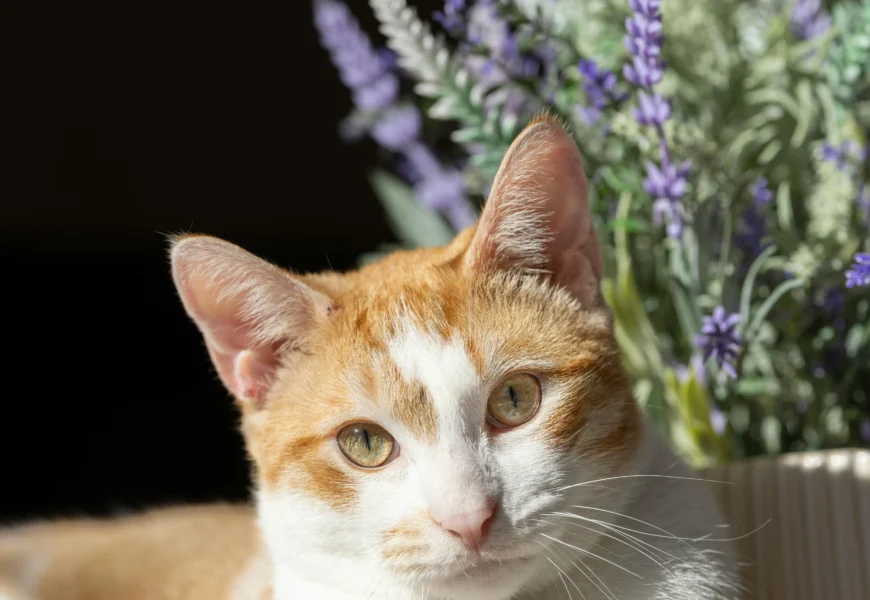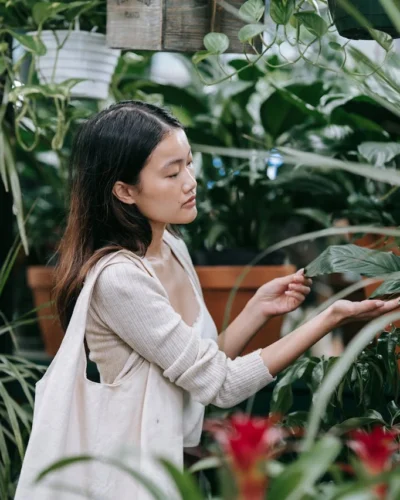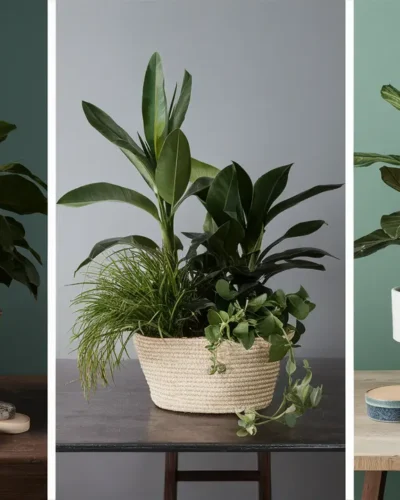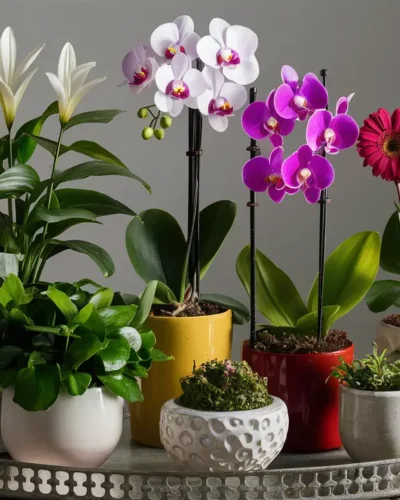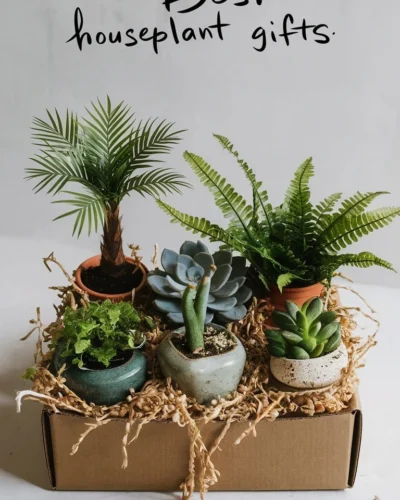This guide will illuminate the path to a harmonious coexistence between your cat and your indoor jungle. We’ll delve into the perilous plants to avoid, celebrate the cat friendly houseplants, and guide you in creating a haven where both you and your furry friend can thrive.
Table of Contents:
1. The Dangers of Toxic Plants: Unmasking the Toxic Foliage
Sharing your living space with a cat comes with a unique set of responsibilities, especially when it comes to your houseplants. The alluring allure of greenery can easily entice your feline friend to partake in a nibble or two, which can have dire consequences. A plethora of common houseplants harbor toxins that, upon ingestion, can cause a range of unpleasant symptoms in cats. These symptoms can range from mild gastrointestinal upset to life-threatening complications.
The most notorious offenders in the plant kingdom include Lilies and Dieffenbachia. These plants are particularly dangerous for cats as even a small amount can cause severe kidney failure. The insidious nature of these toxins often goes unnoticed until the symptoms become quite severe.
Other toxic plants to keep out of reach of your cat include Pothos, Philodendron, Peace Lily, and ZZ Plant. These plants can cause oral irritation, vomiting, and diarrhea. Sago Palm, Cast Iron Plant, and English Ivy, while beautiful additions to any home, pose significant threats to your cat’s health.
Understanding the Signs: It’s essential to be vigilant and seek immediate veterinary attention if you suspect your cat has ingested any of these toxic plants. Symptoms to watch out for include:
- Excessive drooling
- Vomiting
- Diarrhea
- Lethargy
- Loss of appetite
- Tremors
- Difficulty breathing
- Seizures
Early intervention can drastically improve your cat’s chances of a full recovery. Let’s explore the safer alternatives that can turn your home into a haven for both you and your feline companion.
Further Reading: If you’re seeking more comprehensive information on toxic houseplants for cats, consider reading “Say Goodbye to Spider Mites: A Complete Guide to Saving Your Houseplants” [Link to article]. This insightful article delves into the identification and elimination of spider mites, a common pest that can afflict houseplants and potentially harm your cat.
2. Our Top Recommended Cat Friendly Houseplants
Now that we’ve explored the dangers of toxic plants, let’s delve into a world of green companions that are perfectly safe for your curious feline friend. These cat-friendly houseplants not only add vibrancy to your home but also provide a touch of nature that cats instinctively enjoy.
Here are a few cat-friendly houseplants that will bring life and joy to your home, without any worries about your cat’s safety:
Spider Plant (Chlorophytum comosum): These easy-to-care-for beauties are known for their air-purifying qualities and their charming spiderettes, or baby plants, that hang gracefully from the main plant. Cats find the long, grass-like foliage irresistible, and the good news is that they are perfectly safe to nibble on.
Calathea: This stunning family of plants is known for their striking foliage, which comes in an array of vibrant colors and mesmerizing patterns. Their broad, flat leaves offer a tempting surface for cats to rub against, and they are non-toxic to felines.
Peperomia: With its diverse foliage, this low-maintenance plant comes in varieties that range from tiny, delicate leaves to large, fleshy ones. Peperomia’s unique textures and shapes make it an intriguing choice for cat owners. Plus, it’s another safe option for your furry friend to enjoy.
Cast Iron Plant (Aspidistra elatior): The cast iron plant earns its name for its hardiness and ability to thrive in even the most challenging conditions. This low-maintenance plant tolerates low light, occasional neglect, and even your cat’s curious nibbles.
Prayer Plant (Maranta leuconeura): This captivating plant is known for its dramatic leaf movements. During the day, its leaves unfold like hands reaching for the sun. In the evening, they fold together, as if in prayer. These plants are safe for cats and offer a touch of magic to any room.
Benefits Beyond Beauty:
Beyond their aesthetic appeal, cat-friendly houseplants offer a wealth of benefits for both your furry friend and your home.
Air Purification: Many cat-friendly houseplants, like the spider plant, are known for their air-purifying properties, making your home a healthier and more comfortable environment.
Enrichment: By providing safe foliage for your cat to investigate, these plants offer mental stimulation and entertainment. This can be especially important for indoor cats who might need additional ways to stay active and engaged.
Stress Reduction: Studies have shown that being surrounded by plants can have a calming effect on both humans and animals. The lush greenery can create a more peaceful atmosphere and reduce stress levels.
3. Tips for a Cat-Friendly Garden:
High and Out of Reach: Place plants in areas that are inaccessible to your cat, like high shelves or hanging baskets.
Supervision is Key: Keep a watchful eye on your cat, especially when they are interacting with new plants.
Choose Safe Pots: Opt for pots that are sturdy and difficult to tip over.
Explore Enrichment: Provide your cat with alternative options for play and exploration, such as catnip toys, scratching posts, and interactive puzzles.
Remember, While these cat-friendly houseplants are considered safe, it’s always best to err on the side of caution. If you notice your cat displaying unusual behavior after interacting with a plant, consult your veterinarian immediately.
For further guidance on identifying safe plants and creating a cat-friendly garden, check out these resources:
- This article offers a comprehensive list of kitten friendly houseplants and their care requirements.
- This article explores the many benefits of cat-friendly houseplants, including their air-purifying qualities and their role in promoting mental well-being.
4. Creating a Cat-Safe Garden
Now that you’ve got a good understanding of which plants are safe and which are not, let’s talk about how to create a cat-friendly garden in your home. It’s all about making the right choices and creating an environment where your furry friend can explore without danger.
Choose the Right Plants: Start by selecting cat-friendly plants from the list we discussed earlier. Remember, even safe plants can be tempting to a curious cat, so choose ones that are less appealing or that can withstand a little nibbling. For example, plants with a strong scent, like lavender or rosemary, might be less appealing to cats.
Placement is Key: Where you place your plants is crucial. Avoid placing them in areas that your cat frequently visits or where they might be tempted to climb on them. Consider using sturdy shelves or hanging planters to keep plants out of reach. Remember, cats are excellent climbers, so even high shelves might not be safe if your cat is determined enough.
Consider Your Cat’s Personality: If your cat is particularly mischievous, you might want to consider choosing plants that are less tempting to nibble on. For example, plants with prickly leaves or a strong, unpleasant taste are less likely to be targeted.
Provide Alternatives: Offer your cat plenty of alternatives for exploration and play. Catnip, cat grass, and scratching posts can provide an outlet for their natural instincts, keeping them away from your houseplants. You can even consider adding a window perch where your cat can enjoy the view and watch birds without getting into trouble.
Supervise Your Cat: Even with the best intentions, accidents can happen. Always supervise your cat when they are around your plants, especially when they are new to their surroundings. By doing this, you can quickly intervene if they show any signs of interest in the plants or attempt to nibble on them.
Safeguarding Your Cat’s Health: The ultimate goal is to create an environment where your cat can enjoy their space and you can enjoy your plants without worrying about their safety. By following these simple tips, you can create a cat-friendly garden that is both beautiful and safe for your feline friend.
5. Turning Your Safe Plants into a Playground
While safety is paramount, incorporating safe plants into your home can also be a fantastic way to engage your feline friend. Cats are naturally curious creatures, and the presence of greenery can provide them with mental stimulation and a fun outlet for their natural instincts.
A Natural Climbing Frame:
Imagine a lush, safe haven where your cat can explore and engage in playful activities. Think about incorporating tall, sturdy plants like a Parlor Palm or a Rubber Plant. Their vertical growth creates a natural climbing frame, allowing your cat to stretch, climb, and exercise. You can even provide safe, non-toxic materials like sisal rope or jute to encourage climbing and scratching, giving them a designated spot to indulge their natural instincts.
A Stimulating Environment:
A diverse array of plants can create a stimulating environment, enticing your cat’s curiosity. Spider Plants are known for their cascading leaves, providing a tempting playground for pouncing and batting. Calathea varieties with their vibrant patterns and textured leaves offer visual interest and opportunities for playful exploration.
More than Just a Playground:
Adding catnip into the mix can elevate your cat’s playtime to new heights. This delightful herb is a known feline stimulant, providing hours of entertainment and enjoyment. Be sure to choose catnip plants that are grown organically and free of harmful pesticides.
Remember, While these plants provide a fun and safe environment for your cat, it’s crucial to supervise playtime and ensure they’re not chewing on or ingesting any plant material.
Creating a Feline-Friendly Oasis:
By incorporating a variety of safe and stimulating plants, you’ll not only enhance your home’s aesthetic but also provide a haven of enrichment and entertainment for your feline friend.
If you’re looking to further enhance your cat’s indoor jungle, remember to read our articles on how to clean your houseplant leaves like a pro to keep them healthy and appealing to your cat, and learn how to save your houseplants from pesky bugs to ensure they thrive in their new feline-friendly environment.
6. Resources and Further Information:
Let’s face it, sometimes even the most thorough research can leave you with lingering questions. That’s why we’ve compiled a list of resources to help you navigate the world of cat-friendly houseplants with confidence.
The ASPCA’s website is an invaluable resource, providing a comprehensive list of toxic plants and their associated symptoms. They even offer a plant toxicity calculator, allowing you to search specific plants and quickly determine their safety for your feline companions. ASPCA website
For those seeking a comprehensive guide to plant care, we recommend checking out The Green Thumb Guide on SproutFolk. It’s packed with tips and tricks for keeping your plants healthy and happy, including how to deal with pesky pests like spider mites Say Goodbye to Spider Mites and aphids. Aphid Attack
Finally, Feline-Friendly Foliage on SproutFolk is a great resource for cat-friendly houseplants, offering detailed information on safe and suitable options for your furry friends.
Conclusion
Creating a cat friendly home doesn’t have to mean sacrificing your love for lush greenery. By choosing safe plants and taking a few precautions, you can enjoy the beauty and benefits of houseplants while ensuring your feline companion’s safety. Remember, it’s always best to consult with a veterinarian or plant expert if you have any concerns or questions about the safety of a particular plant.
With a little care and attention, you can create a harmonious indoor environment that’s safe for both your furry friend and your plant collection.

